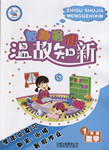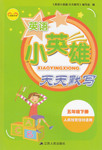题目内容
________ for his timely help, I wouldn’t have been able to make it through the economic squeeze.
A. Were it not B. Would it not be
C. Had it not been D. Should it not be
 智趣暑假温故知新系列答案
智趣暑假温故知新系列答案 英语小英雄天天默写系列答案
英语小英雄天天默写系列答案 暑假作业安徽少年儿童出版社系列答案
暑假作业安徽少年儿童出版社系列答案Stress(压力) is everywhere in our everyday life. Not only men have it, but also women and young people.
The most important reasons of stress are:death, diseases, exams, making money, getting married, moving houses, changing jobs, ending friendships and so on …
How do you know whether you have stress? Could you give your answers to the following questions?
Yes | No | |
Do you easily get angry? | ||
Do you often sleep badly? | ||
Do you get headaches a lot? | ||
Do you take sleeping pills? | ||
Do you find it difficult to relax? | ||
Do you usually hide your feelings? | ||
Do you smoke and drink a lot to keep quiet? | ||
Do you find it difficult to put your heart into something? |
If you answer “Yes” to more than two of these questions, you are one of those people with stress. So what can you do about it?
Doing relaxing exercises, talking with friends and listening to light music are all usual ways of relieving(减轻) stress. However, doctors now say that there are easier ways—people should laugh and smile more often. When you laugh and smile, your body relaxes. They also say that people, especially men, should cry more often, because crying is the natural way of relieving stress.
1.Who has got stress in his everyday life?
A. Men. B. Women.
C. Young people. D. All the above.
2.If you have over problems listed in the table, you are the person with stress.
A. two B. three
C. five D. eight
3.Which of the followings is NOT the reason of stress?
A. Taking exams. B. Changing jobs.
C. Taking sleeping pills. D. Making money.

